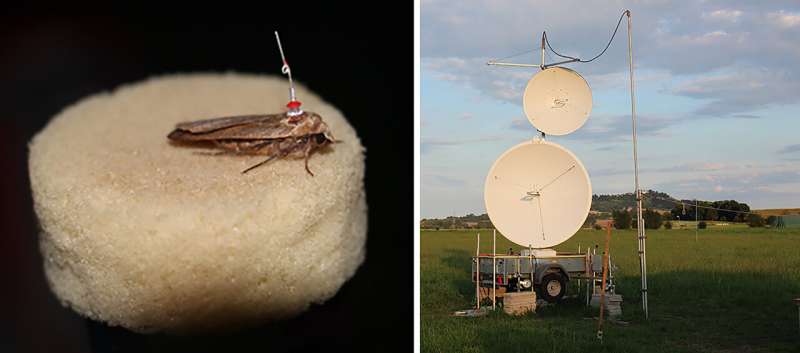A new study reveals the surprising and far-reaching impacts of light pollution on the behavior of moths, even in areas outside the direct reach of artificial light sources. This discovery sheds light on the growing problem of light pollution and its detrimental effects on nocturnal ecosystems. Light pollution is a pressing environmental issue that deserves greater attention.

Shedding Light on the Alarming Effects of Light Pollution on Moths
Light pollution is a far more serious problem than previously thought. According to a recent study, the impact of artificial light at night extends beyond the immediate vicinity of street lamps and illuminated buildings. Researchers from the Julius-Maximilians-Universität (JMU) Würzburg in Germany, in collaboration with scientists from Berlin and Providence, U.S., have discovered that the flight behavior of moths is significantly disrupted even in areas outside the direct cone of light.
The study, published in the Proceedings of the National Academy of Sciences, used advanced radar tracking technology to observe the flight patterns of various species of moths. The findings reveal that moths not only lose their orientation directly under street lamps but also exhibit more erratic and curved flight paths in the surrounding dark areas. This suggests that the impacts of light pollution on nocturnal insects are much more widespread and complex than previously understood.
Illuminating the Threat: How Artificial Light Affects Moths and Their Ecological Roles
Moths play a crucial role in the ecosystem, serving as important pollinators and a vital food source for many predators. However, the increasing use of artificial light at night is posing a grave threat to these nocturnal creatures. The study found that only a small percentage of the moths observed (4%) were actually drawn directly to the streetlights, challenging the assumption that this is the primary way light pollution affects them.
Instead, the researchers discovered a more insidious impact: the flight paths of the moths, including hawkmoths and lappet moths, were significantly more erratic and curved outside the illuminated areas. This disorientation can have serious consequences, making the moths more vulnerable to predators and disrupting their ability to fulfill their ecological roles, such as pollination.
Unraveling the Complex Interplay Between Light Pollution and the Moon’s Influence on Moths
The study also revealed an intriguing interaction between the disorientation of moths caused by artificial light and the influence of the moon. Depending on whether the moon is above or below the horizon, the effects of light pollution on moth behavior can vary. However, the researchers acknowledge that they do not yet fully understand the nature of this interaction.
Further research is needed to shed light on this complex relationship and its implications for the broader ecosystem. As one of the leading experts on the topic, Dr. Jacqueline Degen of the JMU Biocentre emphasizes the need for a deeper understanding of the far-reaching consequences of light pollution, which she describes as “one of the most dramatic man-made changes on earth.” The findings of this study serve as a wake-up call for the urgent need to address the growing problem of light pollution and its impact on nocturnal species, such as moths, and the delicate balance of our natural world.
